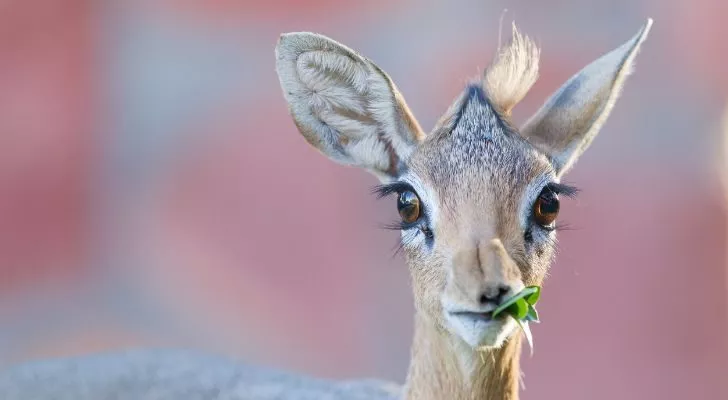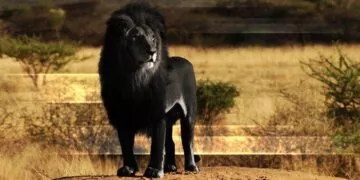Dik-diks might catch your attention and make you giggle because of their name.
However, the reason why they’re called dik-diks (spoiler alert: it’s not because of their private parts) and the many interesting facts about them might surprise you.
Continue reading to learn more about this cute animal, like the pattern dik-diks make when they run and how their bones are used to create luxurious products.
With that said, here are the 25 facts about the dik-dik!
Dik-diks are antelopes, a diverse group of hoofed mammals known for their elegant appearance and fast movement.
They only stand 12 to 18 inches (30 to 45 centimeters) tall at the shoulder, depending on the species of dik-diks.
There are four species of dik-diks: Günther’s dik-dik, Kirk’s dik-dik, Salt’s dik-dik, and Silver dik-dik.
Out of the four species of dik-diks, the largest one is Kirk’s dik-dik.
Live silver dik-diks are sold and used for training hunting falcons.
Male dik-diks have horns that grow up to 3 inches (7.6 cm) long. Female dik-diks, on the other hand, don’t have any horns.
The dark spots below the eyes of dik-diks contain preorbital glands, which they use to scent-mark their territories.
Another way dik-diks mark their territories is by using their dung and pee.
Dik-diks reach maturity at just seven months old. Once mature, their parents kick them off their territory.
There was an Italian pop band formed in 1965 called “Dik Dik.”
Their name is derived from the noise they make with their nose when in danger, which also alarms other dik-diks and animals of nearby predators. It sounds like “dik-dik,” but some hear it as “zik-zik.”
In 2021, two men from Kenya were arrested for poaching in Kajiado County. They were caught with zebra and dik-dik meat, weighing roughly 396 pounds (180 kilograms).
Dik-diks have elongated snouts that they can use to help cool themselves down, which they only use when the temperature is over 104 °F (40 °C).
They also don’t need to drink water, as the amount of water they get from their diet is already enough.
Dik-diks reside in eastern and southern Africa. You can see them in countries such as Somalia, Kenya, and Tanzania.
There’s a card game involving dik-diks called “Don’t Be a Dik Dik.” You lose if you end the game holding the Dik Dik card – the loser then has to shout, “I’m a Dik Dik!”
Dik-diks run in a zigzag pattern when trying to escape predators like eagles, lions, and humans.
These tiny antelopes have the ability to run as fast as 26 miles per hour (42 kilometers per hour).
They’re herbivores that often eat foliage, shoots, fruit, and berries. They also consume acacia leaves, shrubs, and sometimes grass.
The small bones from the legs and feet of dik-diks are used for jewelry, while their skin is turned into suede to make gloves. Also, the horns of male dik-diks are used for making keychains.
Some antelopes live in herds. But in the case of dik-diks, they form monogamous pairs.
Female dik-diks can have up to two offspring per year as they’re only able to give birth to one calf per gestation period, which lasts around 5 to 6 months.
The lifespan of dik-diks in the wild can range from 5 to 10 years. Those in captivity, though, can grow as old as eighteen.
When eating, dik-diks do a process called “chewing the cud,” wherein food is regurgitated and re-chewed to aid their digestion further.
Dik-diks are nocturnal creatures, which helps them prevent unnecessary water loss.

Dik-diks are small antelopes living in Africa, and they’re named after the noise they make when in danger. Speaking of being in trouble, their incredible speed and agility help them avoid predators.
As you may notice, dik-diks are often recognized because of how funny their name sounds. So funny that a card game was even made that requires you to shout its name!
Now, you won’t see these adorable creatures in herds as they live in pairs. But imagine how cute it would be to see a bunch of them gathered together!


















